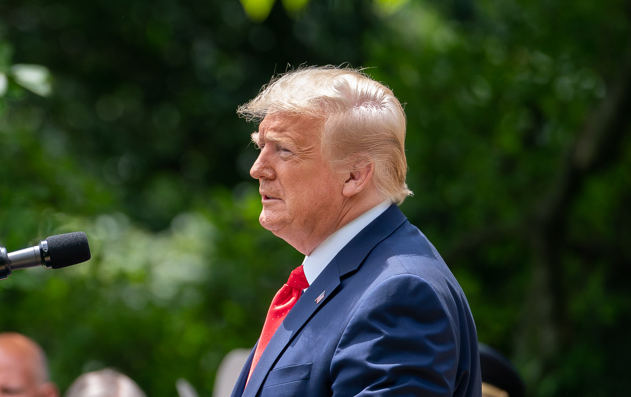Trump Tariffs: Revenue Estimates | Tax Foundation
President-elect Donald Trump has proposed to implement a universal baseline tariffTariffs are taxes imposed by one country on goods imported from another country. Tariffs are trade barriers which increase prices, reduce the amount of goods and services available to US businesses and consumers and place an economic burden on foreign suppliers.
will be imposed on imports once he assumes office. We estimate that a 10 percent tariff on all imports would raise $2 trillion, and a 20% universal tariff will raise $3.3 trillion between 2025 and 2034. This is before we factor in the impact of the taxes on the US economy. In 2025, a 10 percent universal tariff would increase taxes on US households by $1,253 on average and a 20 percent universal tariff would increase taxes on US households by $2,045 on average.
Revenue raised by tariffs would fall well short of what is needed to fully offset the revenue losses of making the expiring provisions of the 2017 TaxA tax is a mandatory payment or charge collected by local, state, and national governments from individuals or businesses to cover the costs of general government services, goods, and activities.
Cuts and Jobs Act is permanent.
To calculate how much revenue a tariff will raise, we begin with a baseline projection for goods imports in the next decade. Imposing a tariff on imports would result in fewer imports. We use an import elasticity of 1 to project how imports will fall in response to tariffs of 10 percent and 20 percent. The amount that imports shrink varies depending on the tariff rate applied, meaning that doubling the rate doesn’t double the revenue.
From here, we multiply the tax basisThe tax base is the entire amount of income, assets, consumption and transactions subject to taxation. A narrow tax base can be inefficient and non-neutral. A broad tax base allows for lower tax rates and reduced administration costs.
by inclusive tariff rate (the percentage divided by one plus rate) to estimate the initial customs duties revenue raised under perfect conformity. Then, adjust to reflect a compliance rate of 85 percent, which represents an average tax Gap. The tax gap is the difference in taxes legally owed versus taxes collected. According to the IRS’s latest estimate (2011-2013), the gross tax gap in America accounts for at least $1 billion in lost revenue every year. This suggests a voluntary compliance rate of 83.6 per cent. The net tax gap can be calculated by subtracting the late tax collections from gross tax gaps: from 2011 to 2013 the average net gap was about 1 billion.
. Payroll taxA payroll is a tax that is paid on wages and salaries to finance social insurance programs such as Social Security, Medicare and unemployment insurance. Payroll taxes are social security taxes that make up 24.8 percent of the combined federal, state and local government revenue.
Accounting for income and payroll tax offsets, our conventional revenue estimate finds that the 10 percent tariff would generate $2 trillion in increased revenue, while the 20 percent tariff would generate $3 trillion over a decade. Accounting for income and payroll tax offsets, our conventional revenue estimate finds that the 10 percent tariff would generate $2 trillion of increased revenue, while the 20 percent tariff would generate $3.3 trillion over a decade.Because both taxes would shrink the size of the US economy, the dynamic scores are smaller: $1.7 trillion for the 10 percent tariff and $2.8 trillion for the 20 percent tariff. If foreign countries retaliate to the US-imposed duties, revenue will continue to fall as the economy shrinks. We estimate that a tariff of 10 percent on all US exports will shrink tax revenues dynamically by more than $190 million over a period of 10 years. Based on conventional revenue estimates, a tariff of 10 percent would increase taxes for US households in 2025 by an average $1,253 and a tariff 20 percent would increase taxes by an average $2,045. Using Tax Foundation’s General Equilibrium model, we estimate that making individual provisions of the TCJA permanently would reduce federal revenue by $3.4 trillion. The estate pays the tax before assets are distributed.
provisions by $200 billion, and the business tax provisions by $643 billion, for a combined $4.2 trillion revenue loss over the next decade.
Universal tariffs of 20 percent would not raise enough revenue to offset the revenue loss of individual permanence alone. These tariffs, if they were met with foreign retaliation or a reduction in economic output, would be enough to offset any economic benefit from making individual provisions permanent. In other words, attempting to “pay for” making the individual provisions permanent by imposing universal baseline tariffs would cause a net reduction in tax revenues and economic output, while simultaneously increasing the tax burden on lower- and middle-income taxpayers.
Lawmakers will need to pursue fiscal responsibility as they address the tax law expirations, but fiscal responsibility requires finding sound ways to pay for spending priorities. Tariffs don’t make the cut.
https://www.youtube.com/watch?v=dEF5D_IV0EEStay informed on the tax policies impacting you.
Subscribe to get insights from our trusted experts delivered straight to your inbox.
Subscribe to our Newsletter






